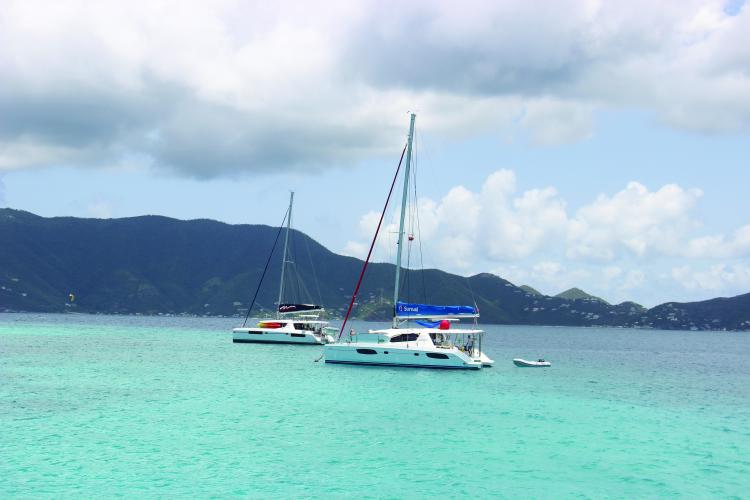Let’s Get This Charter Started!
You see the enticing ads in all of the sailing and boating magazines. You see trip reports and travel blogs. You see your friends’ postings on Facebook. And you definitely want IN on the charter vacation thing.

While it’s true that some charter companies are willing to turn their heads if you have a “pulse and a credit card,” and send out inexperienced sailors, frankly, that’s not the kind of charter company you’d want to sail with. If they have such a cavalier attitude towards someone else’s very expensive boat (most charter boats are not owned by the companies, but by individuals), what kind of attitude will they have when something goes wrong?
Even long-time charterers had to start somewhere. The most prosaic and (perhaps) economical way to learn how to charter is to take a course. Many sailing schools offer a bareboat cruising certification course, assuming the prerequisite courses have been taken. If you’re in the Chesapeake Bay region, those courses include overnight cruises on the Bay, and teach not only how to sail the boat, but how to manage it. The course provides training, but also the experience of packing for, and living aboard, a boat. It’s a lot less painful to find out that a charter is not for you, or that you get seasick, when you can get off the boat and go home.
If the Chesapeake Bay is not exciting enough for you, there are sailing schools in the Caribbean and elsewhere—which come at increased cost due to travel expenses—that provide a similar experience. The cost provides the added bonuses of going somewhere exotic, and preparing for the charter experience in the places you might hope to go yourself someday. It won’t be a rum-soaked week of laziness, but can provide a good mix of work and play.
Those with a bit more experience and confidence can opt for a flotilla—sort of like chartering with training wheels. Groups of like-minded sailors travel aboard separate boats with pre-arranged rendezvous spots, with expert crews among them. A flotilla saves newbies the stress of figuring out itineraries, as well as having the comfort of help within the group. There’s also the possibility of making new like-minded friends (but the risk of being stuck with people you’d rather leave behind).
While I haven’t been in this position in a long time, and don’t know how prevalent the practice is anymore, my first attempt at bareboat sailing resulted in having a “friendly skipper” foisted on us. Though we already owned a boat, the boat we were chartering was significantly bigger, so the charter company required us to demonstrate our bona fides to their (then) $125-a-day captain –for whom we were required to provide a private cabin (necessitating getting a larger boat) and all meals, and whose unpleasant company we were forced to endure. Luckily, we were able to prove that we were worthy of handling the boat on our own and were able to drop the skipper off at the nearest anchorage from which he could get back to base. With that sail under our belts, we wouldn’t need to prove ourselves again. The good news is that most captains are a lot more customer friendly than the one we had.
If all else fails—assuming you have adequate funds to go this route—a fully-crewed charter can be a great learning and confidence-building experience. You can do as much or as little as you want, and can’t help but figure things out along the way.
~By Eva Hill




